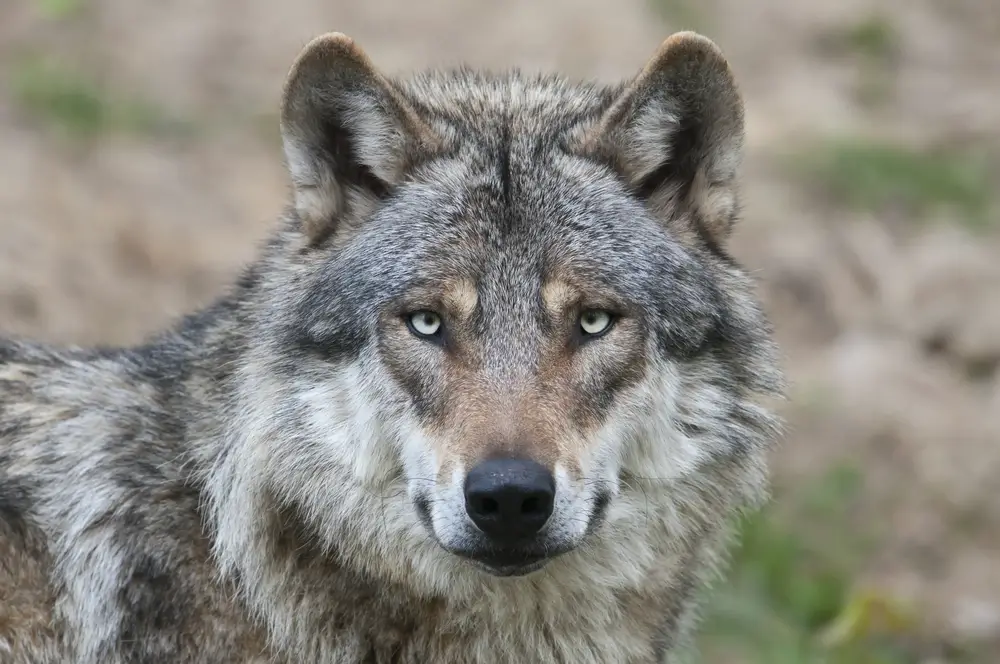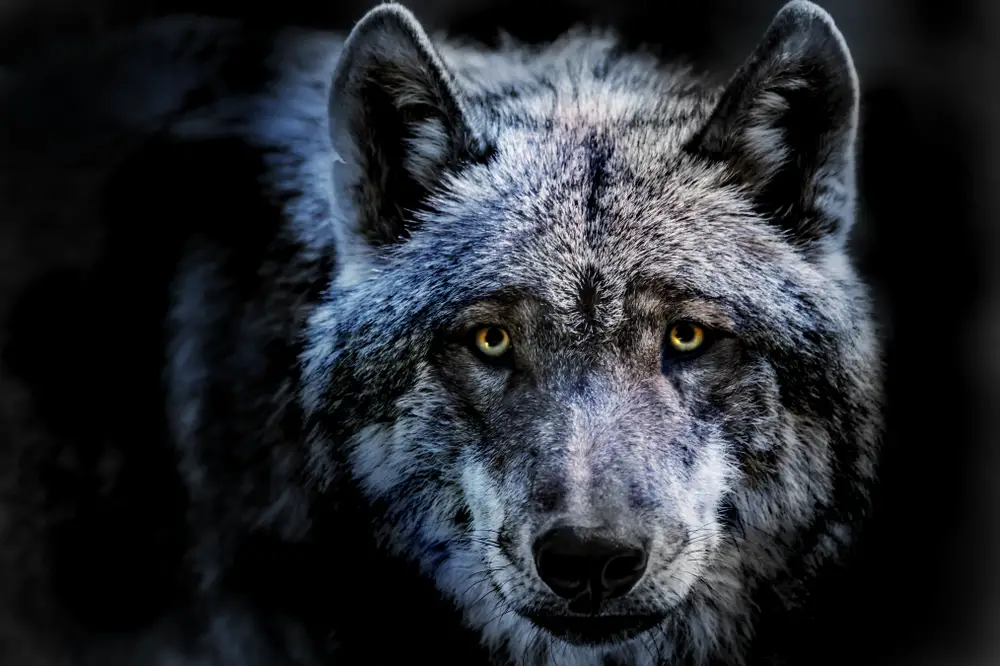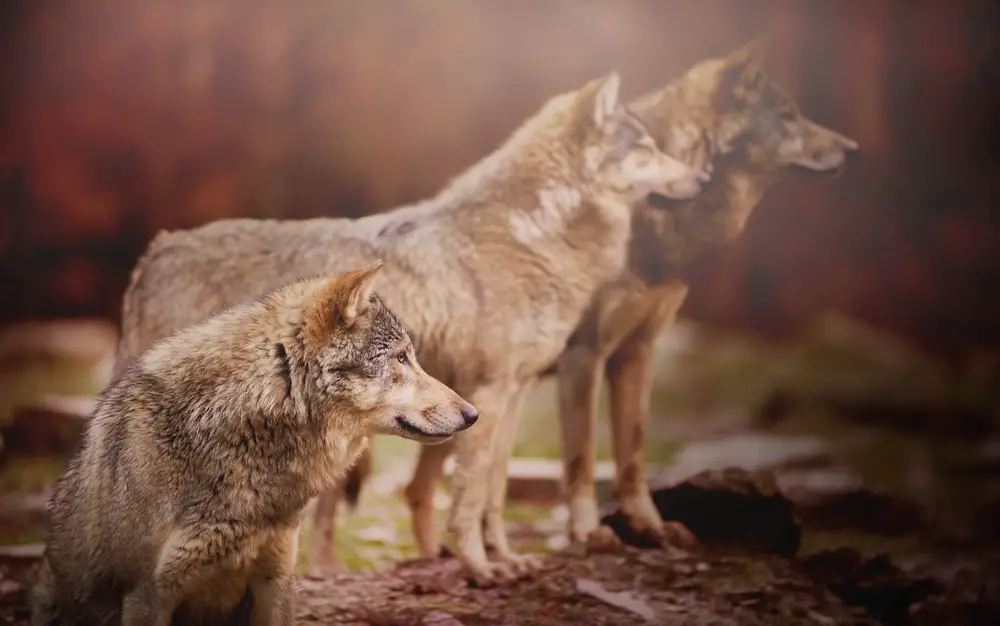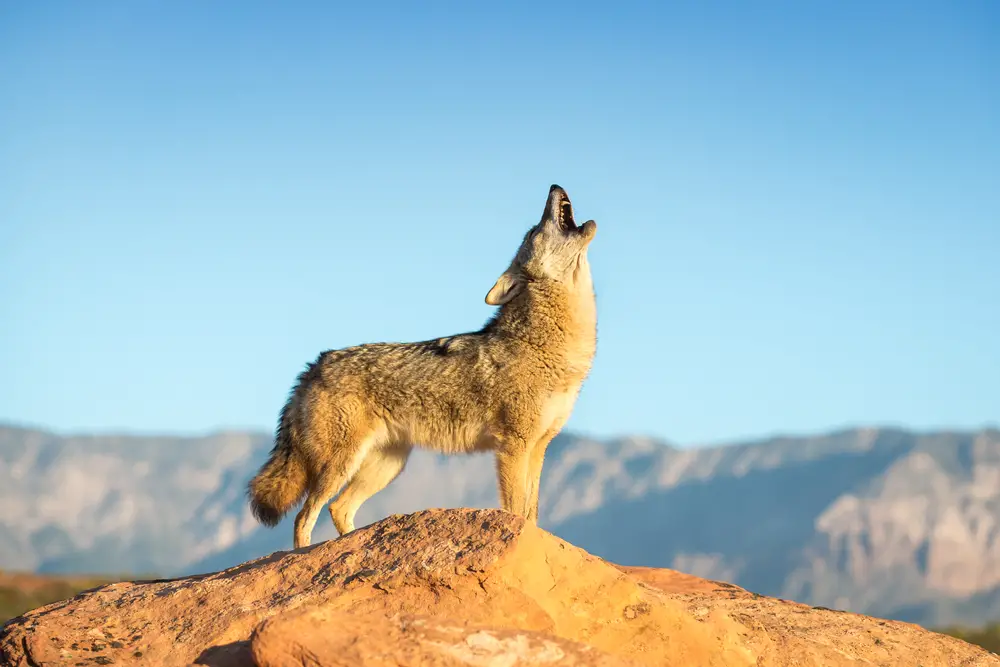When we think about wolves, we often draw back to those images we have seen in movies and television shows.
Wolves are somehow always shown to be howling at the moon, howling into the night or characters hear the sound of wolves howling in the distance to get a sense of impending danger.
So, why do wolves howl, and what does this mean?
This guide will take a look into the reasoning behind why wolves howl, and how wolves communicate with one another.
Why do wolves howl?
Wolves are incredibly intelligent creatures. What we know about wolves, or the Canis lupus, is that they are pack animals. What this means is that they have a pack mentality, where everyone works together as part of a family and team.
As a result, wolves have organized themselves into social groups of wolf packs, where they sleep, hunt, play, live and travel together. Wolves will therefore raise young as a unit, and as a family instead of just the breeding pair, and there is a social hierarchy where each wolf has different roles and responsibilities to maintain within the pack.
Because wolves hunt and prey on animals as a team, their attacks are carefully planned and coordinated. This can lead you to wonder why wolves howl, or how they communicate with one another.
As wolves live in packs of about 6-10 members, they will form strong bonds, connections and relationships with their pack members.
This is why wolves howl. Wolves will howl in order to communicate with other members of their pack, but also to convey their location to their pack members.

This is also important because wolves hunt in packs, where they will separate to find prey or close off prey so that they cannot escape. In these cases, a wolf’s howl is a means of showing where they are exactly, so that they can coordinate with other wolves to attack the prey.
A wolf’s howl can actually carry up to 16km, or 10 miles in open tundra and wilderness, so howling is a very effective form of communication for them.
By howling loudly, other wolves will be able to tell whether a wolf is nearby. What this means is that fellow members of the wolf pack will be able to locate them, whilst rival wolf packs will know to back away from their territory.
Howling in this sense can be a sign of aggression, as it can be used to claim territory and convey that other wolves and predators are not welcome.
Studies have also shown that wolves will also howl at other pack members to show affection and communicate with them in a non-defensive way, rather than with aggression or anxiety. Howling in this manner towards a particular wolf shows a close social bond and familial connection.
What is also interesting is the fact that whilst wolves howl to give away their position to other rival packs and members of their own pack, they do not howl when they are raising their young.
It is thought that this is done so that rival pack members and other predators do not know where the den is, or where the pups are, which could put them at risk.
For the most part, the main reason that wolves howl is to use vocalizations. This is either to warn other pack members about predators, convey their location to pack members, defend their territory and to find potential mates.
Most wolves will begin howling as pups as early as three to four weeks old, and can use their howls to coordinate with other pack members and demonstrate affection and emotion.

How do wolves communicate with each other?
It may surprise you to find that howling is not the only way that wolves communicate with one another. Wolves actually have three different forms of communication. These are olfactory, which is scent, vocal, and postural, which means body language.
Wolves will use all three forms of communication to demonstrate emotions, feelings and behaviors towards other wolves and animals.
For instance, olfactory communication could be where wolves urinate to mark their territory for other wolf packs, whereas postural communication would be the body language they use such as bared teeth to show aggression.
As you may have guessed, vocal communication would be the actual sounds and vocalizations such as howling that wolves use to speak to one another or relay information to each other.
Whilst most people assume that wolves are only able to vocally communicate with one another by howling, this is not the case. Wolves have various vocalizations including growls, barks, yips, whimpers and whines, much like domestic dogs do.
Wolves can also communicate by leaving scent markings around their territory to demonstrate to other animals that a pack is nearby.
Wolves can also identify their pack members from their scent. What you may not know is that wolves can also communicate with one another just by their eyes.

Wolves are able to infer meaning and understand each other by looking at the direction of their gaze. This is often used when wolves are coordinating an attack as a pack or group, as howling could alert the prey and make them scatter.
However, they may use different vocalizations to communicate, depending on what they are doing. For instance, a wolf will use a long, held out howl to alert other pack members that they have a kill to draw them nearer to feast on the prey.
On the other hand, a high pitched howl can be used when pursuing the prey, along with shorter barks and howls to show that they are closing in on the prey and attacking.
When wolves are together as the pack, they will often howl at once together, and some wolves will harmonize with the note to make it appear as though there are more wolves in the pack than there are. This can ward off other rival packs, as it creates the illusion that this pack is more powerful with more pack members.
Wolves will also communicate with one another through their body language. This is often done to maintain the social hierarchy within the pack. In a wolf pack, there is typically an alpha male and female, which will be the leaders of the pack, and the dominant pair. These will also be the only wolves permitted to breed within the pack, and will mate for life.
There will usually be second-in-command beta wolves, that are also high ranking in the pack, but will still be under the control of the alphas.
Other members of the pack are typically related to the alphas, as strangers are usually chased off or killed by the pack.
As there is a strongly established pecking order, wolves will use their body language to communicate this with each other. For instance, the alpha may show signs of aggression to ward off competing males, whereas lower ranking wolves will crouch down before the alpha, lick them, or roll over to show the belly and be submissive towards the alpha male wolf.
More dominant wolves will also have better posture, and hold themselves higher than submissive wolves, and will have their hackles and ears raised, whereas submissive wolves may flatten their ears, or draw their tails inwards to convey their passive nature.

Are wolves sad when they howl?
Whilst wolves may use a range of communicative methods to demonstrate feeling, position or social hierarchy, most of the time, howling and whimpering does not necessarily mean that they are sad.
Most of the time, when wolves whimper and whine, it is often accompanied by rubbing bodies or nuzzling into each other’s mouths and fur. This is a means of bonding and conveying contentedness rather than anxiety or sadness.
As somber as it may sound, a howl is not typically a sign of grief or that the wolf is crying in any way. It is actually sometimes a sign of enjoyment, as wolves will howl together after hunting or when the pack comes together.
Why do wolves howl at night?
When wolves howl in the night, it is generally to send a long distance message to other pack members. As mentioned above, wolf howls truly do carry across the wilderness, and can be heard even louder in the stillness of the night.
A howl in the night may also be to rally the pack, letting them know that the hunt is about to begin.
Summary
To summarize, wolves have various ways of communicating, and do not just howl. Whilst howling is a primary form of letting other wolves know their location and rallying the wolf pack to get together, wolves can actually communicate with a range of noises, scents, body language signals, and even just through eye contact!

